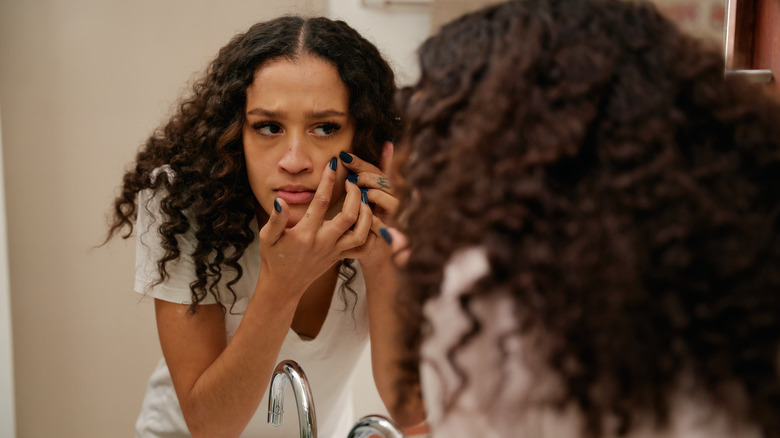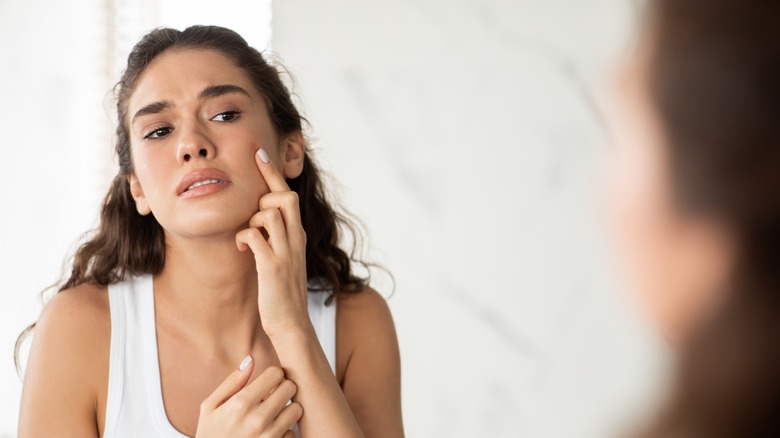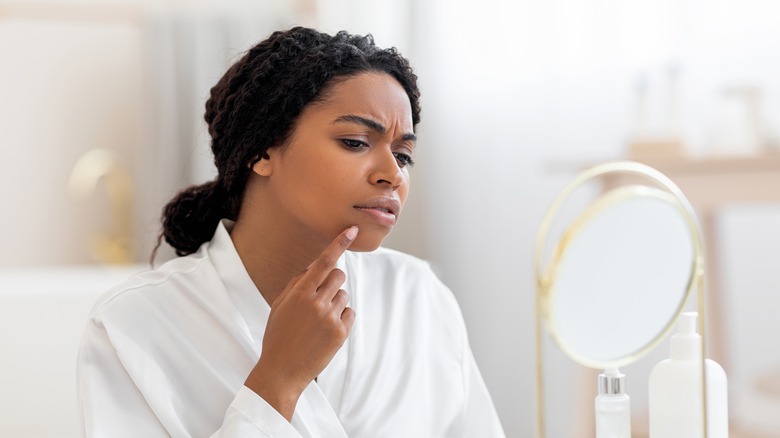Ingrown Hair Vs. Pimple: How To Know The Difference To Treat It Effectively
No one likes waking with a new red bump on their skin. Whenever you see a raised red bump, the odds are that it's pesky acne ready to give your trouble. However, there's also the chance that you might be encountering another unfriendly skin occurrence. Ingrown hairs are another type of skin issue that can throw you off guard. Although they aren't similar in causes (pimples are caused by clogged pores and ingrown hairs by blocked hair follicles), they often both appear as red bumps and can be stubborn to remove. Both pimples and ingrown hairs have the power to be painful and irritating, proving that they're better left unprovoked.
Getting rid of a pimple or ingrown hair is a matter of patience. Either one of these issues will not go away immediately, meaning it's best to try to avoid them in the first place. To prevent getting pimples or ingrown hairs, you'll want to start caring for your skin and ensuring you are keeping it clean and healthy. On the occasion they do appear, it's best to know what you're dealing with to properly treat them as soon as possible.
Differences between ingrown hairs and pimples
While some might think the difference between an ingrown hair and a pimple is obvious, they can be very similar in appearance. Both are characterized by raised red bumps that can easily confuse anyone. However, one of the first ways you can set them apart is by their locations. If you notice a red bump in an area that you've recently shaved, it's likely you are dealing with ingrown hair. Any red bumps in areas you haven't shaved or tampered with the hair are most likely pimples or another form of acne. Though it's possible to find ingrown hairs in a place that you haven't shaved, like your chest or back, it's far less common.
Ingrowns happen when hair grows incorrectly — either sideways or back inside the hair follicle — or when a hair follicle gets blocked by dead skin. This incorrect growth blocks the follicle in a similar way to a pimple with a pore, causing swelling and redness. One of the ways you can distinguish ingrown hairs from pimples is by looking closely and seeing if you can find a hair. While not every ingrown hair will be visible to the eye, there's a small chance you'll be able to notice a small hair popping out.
Treating ingrown hairs and pimples
Although it's challenging to set them apart, once you have, it's all about treating and preventing them from happening again. Fortunately, ingrown hairs will typically resolve themselves after a short time. Even though they might be painful, ingrown hairs don't require special treatment or product to get rid of them, but you should avoid shaving the area until it clears up. Another thing you can do is gently exfoliate the area to get rid of any dead skin cells. Once you've gotten rid of the dead skin layer, the ingrown hair can be freed. Once released, the swelling with subside. To prevent ingrown hairs, shave close to the skin using shaving cream and ensuring the area is wet. Never use an old razor, and be sure to shave in the direction that your hair grows.
Depending on the type of pimple, you may have to have a more targeted approach when it comes to acne. Try to not pop a pimple to prevent further irritation. Use ingredients like salicylic acid or benzoyl peroxide to clear the clogged pore. If you are suffering from a more intense form of acne, you may need to reach out to a dermatologist to see if a specified product is better for you. Cleansing and moisturizing your skin every day will help keep your skin clear and healthy, reducing the risk of pimples forming.


